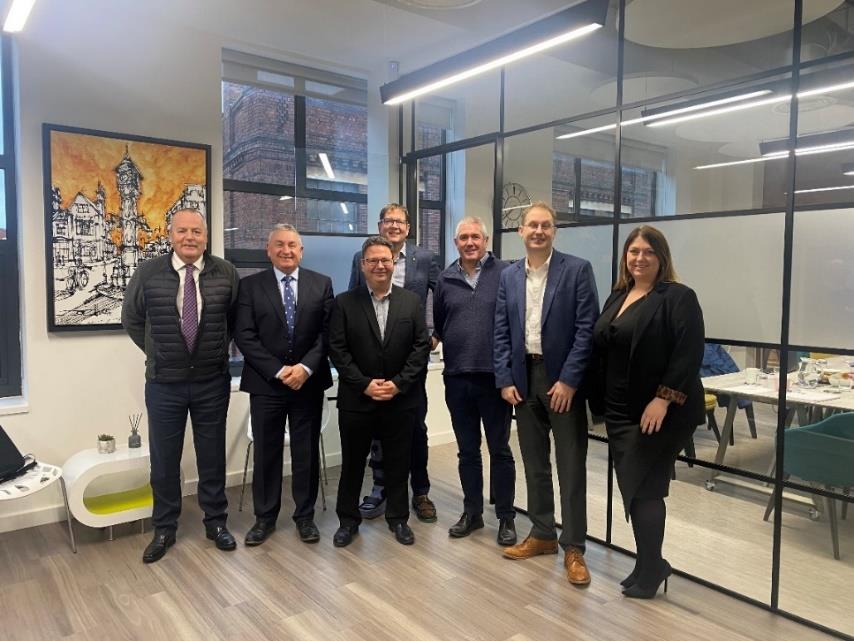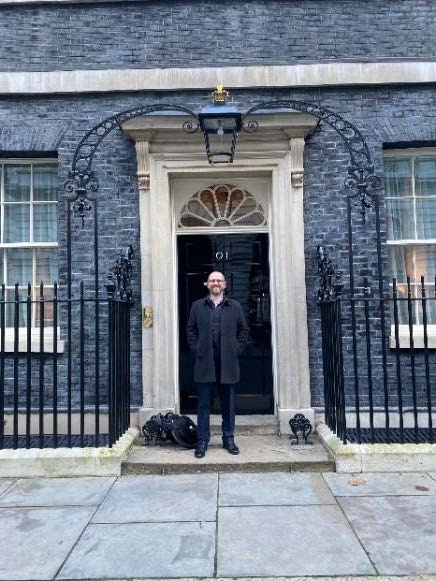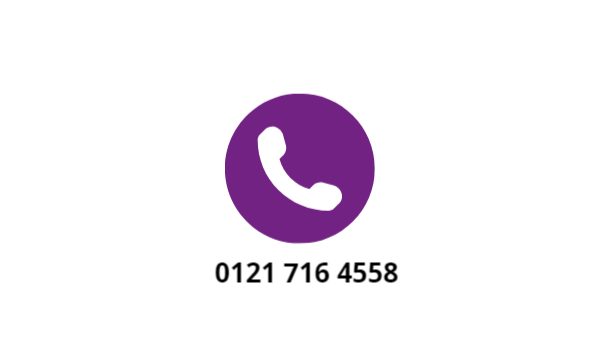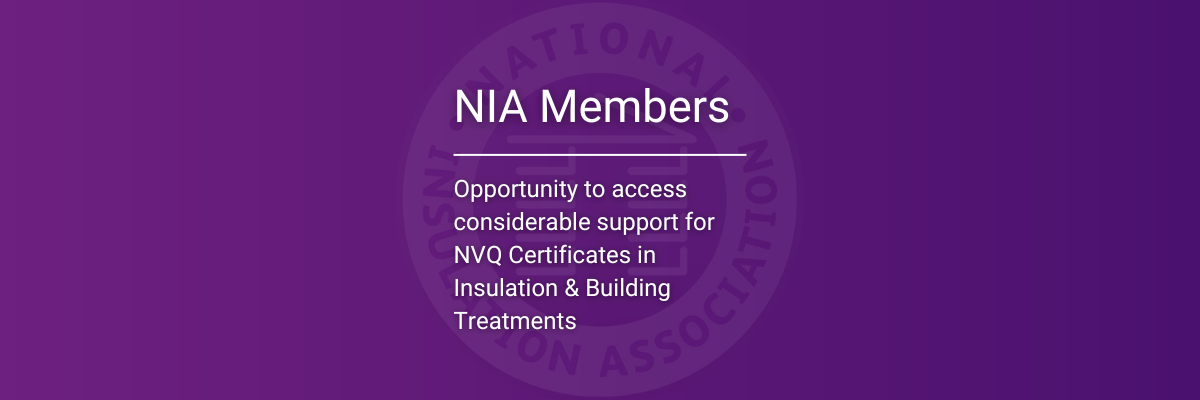| The NIA cannot comment on individual search cost estimates. However, it is worth noting that search costs can vary depending on how the customers are identified. For instance, search costs will be lower if customers are identified by suppliers or Local Authorities (LAs) because of the greater economies of scale associated with the search process. Suppliers and LAs also hold lots of useful data which they can use to quickly and efficiently find eligible households.
However, in practice, installer referrals are also a key part of the search process, as they can identify potentially eligible households at a local level, who may have been overlooked by suppliers or LAs. Considering the wider eligibility pool of ECO+, we envisage that installers will continue to play an integral role in the search process of this scheme.
For installers, search costs are generally higher because they cannot benefit from the same economies of scale as suppliers or LAs. In these cases, search costs are first incurred by installers and then passed onto suppliers. Hence, it is vital for installers that the government allocates sufficient resources towards search costs. It is important that the government’s assumed search costs take this into account. If not, there is a risk that search costs may be underestimated, which could prevent the Government from reaching its target to deliver insulation measures to 410,000 households through ECO+. If search costs in practice turn out to be higher than the Government’s estimates, then the current funding pool allocated for search costs will restrict the number of households that can be reached by the scheme.
|
| 8. |
Search costs across the two eligibility groups: Do you agree with our plans to use lower search costs for the general eligibility group in the final ECO+ modelling compared to the low-income group? If so, by how much should we reduce search costs in the general group? Please provide BEIS with information on search costs supporting your response. |
| The NIA broadly agrees with plans to lower the search costs for the general eligibility group. As it is a larger pool of households with a simpler set of eligibility criteria, it should be easier to identify eligible households.
|
| 9. |
Reducing search costs generally across the scheme: Do you have any ideas on how search costs could be reduced across the scheme? Please provide BEIS with information on search costs supporting your response. |
| The consultation makes it clear that tools will be developed for consumers to express their interest through digital platforms. This could be an important first step to increase consumer awareness and reduce the need to search for those who are eligible. Digital tools, such as social media platform, will also be vital for promoting the scheme.
The NIA also suggest that given that the eligibility of the general eligibility group is based on council tax bands, those with access to council tax data such as LAs should be involved in local delivery and the search process, which could increase search efficiency and lower search costs significantly.
The risk with the current design of the scheme is that it does not make the most efficient use of search cost and administrative resources in the long-term. According to the ECO+ impact assessment, 40% of the properties targeted by ECO+ will require further energy efficiency improvements to reach the Government’s target of EPC Band C by 2035. It may therefore be considered an inefficient use of administrative and search resources to only carry out a partial retrofit at these properties and then expend further resources retargeting them further down the line.
Ideally, the most efficient solution would be to undertake a deeper retrofit, once a property has been identified through the search process, so that it reaches EPC Band C without the need for further search costs to be incurred. However, we recognise that ECO+ intends to deliver primarily single insulation measures to as many households as possible, so this may not be realistic under the scheme’s current proposed format. Hence, if a deeper retrofit now is not possible under ECO+, the NIA proposes that the Government establishes a central data repository. This would ensure that ECO+ properties which require further retrofitting in future are already stored on the Government’s database, so further search costs will not need to be wasted retargeting them.
|
| 10. |
Measure cost assumptions: Do you agree with our estimates for the capital costs of installing measures, as outlined in Table 3? Please provide BEIS with information on measure costs supporting your response. |
| The NIA largely agrees with the Government’s capital cost estimates, although we are concerned that, in some instances, the cost estimates are too generalised.
The Government’s estimates treat floor insulation as one homogenous category with a single capital cost estimate. Yet, in reality, there are many different types of floor insulation that can vary significantly in cost. Installation costs for under floor insulation (UFI) range from £1,600 to £2,900[1], while solid floor insulation (SFI) can cost £4,000-£6,000.[2] Considering the large cost disparity between different types of floor insulation, we would urge the government to, at the very least, produce separate cost estimates for UFI and SFI.
The NIA is worried that, at present, some of the Government’s capital cost estimates are overly vague. There is a genuine danger that a lack of detail on capital costs will detract from the efficacy of the scheme and prevent the Government from delivering energy efficiency improvements to as many households as possible.
Installation costs are often pushed up by additional costs, such as travel costs. Installers will be expected to carry out surveys and installations at properties in different geographical locations across the country. The travel and additional costs associated with reaching a high number of geographically disparate households will inflate capital costs significantly. These additional costs need to be accounted for somewhere in the modelling, otherwise there is a risk that theoretical capital costs may underestimate the total cost of carrying out an installation in practice.
|
| 11. |
Measure cost assumptions: Do you agree with our estimates for the average installation costs of installing cavity wall and loft insulation, as outlined in Table 4? Please provide BEIS with information on measure costs supporting your response. |
| As mentioned in our response to Q10, we have concerns that some of the Government’s capital cost estimates for measures are too generalised and fail to fully account for the diversity of the UK housing stock.
In the consultation document the government mentions that there are 3.8 million households with easy-to-treat standard cavities in the UK and 1.3 million with hard-to-treat cavities However, the capital cost of installing cavity wall insulation (CWI) I in those so-called “hard-to-treat” cavities will likely vary widely depending on the specific characteristics of those individual cavities. There are numerous reasons why a cavity may be classified as hard-to-treat, ranging from having a narrow cavity to experiencing high exposure to wind and rain.
Therefore, we think it is overly simplistic to group all hard-to-treat cavities into a single “high-cost” group and assign them the same estimated capital costs, especially considering there is a huge disparity in the Government’s capital cost estimates for low and high-cost cavity walls. In reality, the “high-cost” group is far from homogenous and contains many different cavities that will have significantly different costs associated with installing CWI. For example, some cavities are still classified as hard to treat, but do not incur particularly high installation costs. For these cavities, the capital cost estimates given in Table 4 do not provide an accurate representation of their potential cost. The capital costs of CWI installations cover a broad spectrum. Hence, we do not agree with separating cavity walls into two disparate groups with widely varying cost estimates.
|
| 12. |
Additional costs of compliance with retrofit standards: Do you agree with our assumptions for compliance with TrustMark and PAS2035 standards? Please provide BEIS with any information on PAS2035 compliance costs by measure type and risk pathway for the following insulation measures: cavity wall, solid wall, loft, pitched roof, flat roof, under-floor, solid floor, park home and room in Energy Company Obligation (ECO)+ Consultation 22 roof. If not available, please provide information on average PAS2035 compliance costs for these measures across all risk pathways |
| Yes, we agree with the assumptions. |
| 13. |
Supplier administration costs: Are you expecting administrative costs under ECO+ to be lower than under ECO3, given that a lot of the requirements under ECO+ are the same as under ECO4? Please provide BEIS with information on administrative costs supporting your response. |
| No comment. |
Chapter 2: Homes and Household Eligibility (p 23 – 36)
|
| 14. |
Do you agree ECO+ should target two groups with the first focusing on a general group with wider eligibility requirements and the second focusing on low-income households in line with ECO4? |
| Yes, we agree that ECO+ should target two eligibility groups.
The NIA has been calling for a scheme that helps households in the able-to-pay sector install insulation measures for some time. As such, the proposal in the ECO+ consultation that up to 80% of the scheme’s targets will be aimed at the general eligibility group is extremely welcome. The able-to-pay sector makes up 87%[3] of all households (social and private). Many in this sector are struggling to pay their energy bills because of recent energy price rises (up to 141%, as outlined in our response to Q3.) Therefore, the support offered to this sector through ECO+ is very welcome and urgently needed to prevent more able-to-pay households falling into fuel poverty. |
| 15. |
Do you agree with our proposal to target “general group” support at households in Council Tax bands A-D in England, A-E in Scotland and A-C in Wales with an EPC of D and below? |
| Yes, it is an encouraging move to target the able-to-pay sector, but the NIA would like to see a wider eligibility pool for this group, as many households are now struggling with bills and at risk of falling into fuel poverty.
The NIA recognise the scheme as being a good start to support the able to pay sector, however, the industry would like to see a wider eligibility pool and a deeper retrofit offered. This would provide wider benefits to both households, and in reaching net zero targets. |
| 16. |
Do you agree with our proposal to target all eligible low-income households living in EPC band D-G through the low-income group? |
| Yes, we agree with this proposal. The NIA do however point out that EPC Band C is not the maximum level of energy efficiency. Many homes in EPC Band C have the potential to further improve their energy efficiency up to Net Zero standards. Therefore, the NIA would like to see support offered for low-income households living in Band C homes to also be able to upgrade their energy efficiency. However, we recognise that there is a limited funding pot and that it is right to prioritise support towards the least energy efficient properties.
|
| 17. |
Do you agree with our proposal to carry over the same eligible benefits from ECO4 to the low-income group under ECO+? |
| The NIA believes that non-means tested benefits should be included as eligible benefits for the ECO+ scheme. We understand the Government’s reasoning for removing non-means tested benefits from the eligibility criteria for ECO4 because that was a scheme solely targeted at low-income households. However, as ECO+ intends to target a wider eligibility group of able-to-pay households, we see no reason why non-means tested benefits should not be included in the eligibility criteria for the general group.
Recipients of non-means tested benefits are some of the most vulnerable people in society. Many have health conditions that make them particularly at risk to living in cold, damp homes. Thus, we strongly encourage the Government to consider including non-means tested benefits in the eligibility criteria for the general group.
This would increase the pool of eligible households for ECO+ and enable the scheme to reach more of those who are most vulnerable to cold conditions.
|
| 18. |
Do you agree with our proposal to set a low-income group minimum requirement equivalent to 20% of each annual target with flexibility on whether the remaining obligation is delivered to low-income or general group households? |
| The NIA broadly agrees with this proposal, as most low-income households will be addressed through ECO4, so we agree with the 20% requirement. This allows more energy efficiency measures to be delivered to able-to-pay households, who, unlike the low-income group, are unable to access funding through other government schemes.
However, if the remaining obligation is flexible and can be delivered to either group, then it means that there is no requirement to deliver measures to households in the general group. Therefore, the NIA believes that there needs to be an alternative solution for general group households to access funding where they are not able to pay the full upfront cost of measures themselves. |
| 19. |
Do you agree that we should allow up to 80% of a supplier’s low-income minimum requirement to be met through LA and Supplier Flex, with unlimited flex permitted beyond the low-income minimum requirement? |
| Yes, we agree with this proposal, as it should allow a wider pool of eligible households to be reached. |
| 20. |
How can referrals through LA and Supplier Flex be facilitated? |
| No comment. |
| 21. |
Do you agree with our proposal that only PRS households in EPC bands D and E should be eligible for ECO+ in the general and low-income group, while PRS households in EPC bands F and G should be excluded, other than when exempt from the minimum energy efficiency standard? |
| Yes, we agree with this proposal, as ECO+ funding should not be used to help landlords upgrade their properties who are not adhering to the minimum legal standards mandated by the Minimum Energy Efficiency Standard.
|
| 22. |
Do you agree PRS households should not be eligible for secondary heating controls? |
| The NIA is focussed on insulation measures but recognise there are benefits in improving efficiency via heating. We generally believe that the PRS should have access to secondary heating controls to allow for better efficiency, and therefore feel that people should have access to these as widely as possible.
|
| 23. |
Do you agree with our proposal that PRS households in the general group should not be eligible for cavity and loft insulation? |
| No, the NIA does not agree with this proposal.
We are pleased to see that higher-cost insulation measures, such as soldi wall insulation (SWI), are being offered to private rented households. Solid wall insulation (SWI) is vital in the PRS sector, as only 9% of solid wall PRS properties have SWI.[4] Therefore, we welcome the Government’s commitment to delivering higher-cost measures such as SWI to the private rented sector.
Nevertheless, we would also like to see low-cost measures, like loft and cavity wall insulation offered alongside higher-cost measures as part of the same package. This is the best way of ensuring that each property treated in ECO+ receives the most suitable insulation measures for that particular property. Not including loft and cavity wall insulation for PRS households would restrict the number of eligible insulation measures for this group. This would leave PRS properties where loft or cavity wall insulation are the most suitable measures with very few options and risk excluding them from receiving help through ECO+. |
| 24. |
Do you agree with our proposal that social housing will be included for EPC bands EG in line with the eligibility criteria for general and low-income eligibility groups? |
| The NIA agrees that EPC Band E-G social housing properties should be targeted, but we would like to see EPC Band D included in the eligibility criteria as well. EPC Band D still represents a poor level of energy efficiency and falls below the Government’s 2035 target of EPC Band C. Thus, we believe it is imperative to the Government’s energy efficiency and decarbonisation targets that Band D properties are also included.
|
| 25. |
Do you agree that social housing should not receive heating controls through ECO+ |
| No comment. |
| 26. |
Do you agree social housing in the general and low-income eligibility group with EPC band D should only be eligible for the Innovation Measures that are eligible through ECO4? |
| No, the NIA does not agree with this. We believe that EPC Band D properties should be eligible for all eligible insulation measures, not just Innovation Measures (IMs), as these properties still have a poor energy efficiency rating and hence require energy efficiency upgrades to reach the MEES.
Nonetheless, we agree in principle with the idea of Innovation Measures (IMs), as it provides an incentive for innovation in the Low Carbon sector. Therefore, we believe that more properties should be eligible for IMs, including EPC Band C properties that meet the MEES but still have room for further energy efficiency improvements.
|
| 27. |
Do you agree with only having a ‘rural’ rather than ‘rural and off-gas’ requirement for properties to receive an uplift in ECO+? |
| No, the NIA does not agree with this. Restricting the uplift to rural may create a heavier reliance on HUG and exclude households that could significantly benefit from ECO+.
|
| 28. |
Do you agree that rural uplifts of 35% should apply in Scotland and Wales only? |
| No, the NIA does not agree with this proposal.
Whilst we recognise that HUG is available for homes in England, many ECO+ eligible households will not be eligible for HUG funding. The NIA believe that by not applying a 35% rural uplift in England, the Government is placing a massive over-reliance on HUG as one of the sole mechanisms to alleviate fuel poverty in rural, off gas grid homes. This is particularly true because the eligibility criteria for ECO+ are markedly different to that of HUG, so there is limited overlap between the two funding streams.
HUG is targeted at low-income households. However, up to 80% of households targeted by ECO+ are set to come from the general eligibility group, not the low-income group. Thus, the majority of the general eligibility group will not be eligible for HUG funding. A 35% uplift is needed for these properties that cannot access HUG funding because of the scheme’s low-income eligibility criteria.
If the government does not include a 35% uplift for HUG, it risks unfairly penalising rural, off grid homes in the general eligibility group. As well as being remote and hard to reach, these properties are often hard to treat. Therefore, installation costs can be significantly higher when dealing with rural properties. It is essential that ECO+ includes a 35% rural uplift to help cover the additional costs of dealing with rural properties. Without this uplift, we are concerned that there will be a critical shortfall in ECO+ funding for rural properties in the general eligibility group.
With the current proposal to only apply an uplift to properties in Scotland and Wales, there is also a chance that installers may target households in Scotland and Wales at the expense of properties in England. Fuel poverty rates are higher in England than those in Wales, so it is essential rural English properties do not miss out on crucial energy efficiency upgrades.
Since HUG funding is allocated directly to LAs, most HUG properties are council-identified, meaning some properties are missed out. Including an uplift for England would allow for more installer and supplier-identified properties, so fewer properties would be missed.
|
| 29. |
Should the rural uplift only apply to higher-cost measures, and therefore exclude loft insulation and heating controls, delivered in Scotland and Wales through ECO+? |
| The NIA believe that it should also apply to loft insulation.
The additional costs associated with installing insulation in rural properties is not limited to higher-cost measures, so the rural uplift shouldn’t be either.
|
| 30. |
Do you agree that ECO+ should allow the in-fill mechanism with a ratio of 1:1 for flats and 1:3 for houses? |
| The NIA broadly supports these proposals. However, given that ECO+ is targeted at a much wider pool of households than ECO4, there is scope to increase the in-fill ratio. This would increase the economies of scale associated with the scheme and support more households. It would also aid the development of a more holistic approach, which could increase the efficacy of insulation measures installed.
Installing insulation on two neighbouring properties is particularly practical, especially if they are semi-detached or terraced, and there are also benefits of installing measures to properties on same street; reduced costs of scaffolding, reduced installer travel and potential for reduced design and specification costs if the properties are of the same archetype. That said, there are also technical reasons why improving next door properties is a good idea, as there are technical risks associated with only selecting certain properties for retrofit of insulation; these risks can however be avoided with a thorough risk assessment.
ECO+ is a scheme that intends to support vulnerable low-income households and those towards the lower end of the able-to-pay sector. Therefore, the NIA still believes there should be a limit on in-fill to ensure that support is focused towards those who need it the most to upgrade the energy efficiency of their home and reduce their energy bills. However, we do think there is potential to increase the in-fill ratio in certain situations where it makes most sense and is most practicable to do so. Since ECO+ is targeted at a much broader set of households than ECO4, there is less risk that such a policy would detract from the scheme’s fuel poverty objectives. |
| 31. |
Do you agree we should allow ECO4 houses to contribute to the ECO+ in-fill ratio? Do you foresee any further challenges in blending ECO4 and ECO+ in this area? |
| Yes, we agree this proposal. It is the Government’s intention that ECO+ should work in tandem with and alongside ECO4, hence it makes sense to include ECO4 houses within the in-fill ratio. |
| 32. |
Do you agree with our plans to explore additional access routes to the scheme, including through GOV.UK? |
| We agree with these proposals. |
| 33. |
Do you have any views or ideas for how best this might be made to work to overcome noted obstacles? |
| No comment. |
| 34. |
Do you agree with our approach towards blending of funding with ECO+? |
| Yes, we agree with the Government’s approach on this. |
| 35. |
Are there additional issues you wish to flag about the interactions between ECO4 and ECO+ and/or with other grant schemes? |
| Where any interactions between ECO+ and other grant schemes take place, measures installed under other schemes like ECO4 or HUG should not get an ECO+ score. These are separate schemes and suppliers should not be allowed to use funding from other schemes to meet their ECO+ targets. |
| 36. |
Do you agree with our proposal to target the low-income group at eligible households in EPC bands E, F and G that cannot meet the ECO4 minimum requirement? |
| The NIA broadly agrees with this proposal.
It makes sense for low-income households to receive support for energy efficiency measures primarily through ECO4 and the NIA recognise that ECO+ funding will have little benefit to those receiving funding through ECO4 as this will provide a deeper retrofit and a higher level of funding.
In terms of the low-income group, ECO+ should primarily be used to target properties that either do not meet the ECO4 MR or require a top-up measure after they have already received a deeper retrofit under ECO4.
For energy inefficient homes that cannot meet the ECO4 MR for whatever reason, ECO+ should represent a useful alternative avenue to receive support. For homes that did not meet the MR of ECO4, ECO+ should provide an excellent fallback option, ensuring that they are still able to access some funding to help install insulation measures.
However, we would like the target extended to cover EPC band D properties as well. EPC D homes still fall below the Government’s band C target, and may still benefit from energy efficiency improvements. For low-income households, consumers will often not be able to meet the costs of these improvements themselves. Therefore, we believe that low-income band D households should still be eligible for ECO+ funding, if they do not meet the ECO4 MR. Otherwise, low-income band D properties may be neglected by government support to improve the energy efficiency of their homes.
|
| 37. |
Do you agree with our preferred approach to use the ECO4 exemption criteria to evidence whether a property within the low-income group with a starting EPC band of E, F or G cannot meet the ECO4 MR and is thus better suited to receive measures under ECO+? Please include views on how this approach could be improved or modified to better ensure properties receive a whole house retrofit where it is appropriate for them to do so. |
| Yes, the NIA supports this proposal. This should be a useful way of identifying low-income households that may be eligible for an ECO+ referral through ECO4. |
| 38. |
Do you agree with our alternative proposal to use the pre-retrofit property assessment and further documentation to determine whether a band E, F or G property cannot meet the ECO4 minimum requirement and is therefore better suited to receive measures under ECO+? How could this test be made more robust? |
| The NIA agrees with this approach. |
| 39. |
Do you agree with our proposal not to include further tests to distinguish properties which may also be eligible under the HUG, LAD and SHDF schemes? |
| Yes, we agree with the proposal. |
| 40. |
Do you agree with our proposal to exclude E, F or G properties that have received support under ECO+ from receiving further support under ECO4? |
| No, we do not agree with this proposal. This is because:
- These properties may still benefit from energy efficiency measures, with potential to increase the rating to a C or above. If these properties received support via ECO+ and they didn’t attain this band, the property would benefit if it was eligible for ECO4 funding.
- This proposal appears to contradict the consultation’s earlier proposal to allow blending of measures between ECO+ and ECO4, as long as ECO4 measures are ‘installed either before or after any ECO+ measures’.
- We believe there should be an opportunity to top up measures carried out from ECO+ using ECO4 funding. Failing to allow this could lead to some properties only being partially improved and would go against the fundamental principle of supporting single, deep retrofits to properties.
- We recognise that it is likely that most properties receiving support through ECO4 may not require additional measures. However, we recognise that there will be some cases, and so the consultation should not go ahead with this proposal.
|
| 41. |
Do you have views or information on how the proposals set out in this consultation will impact people with protected characteristics under the Equality Act 2010? |
| No Comment. |
Chapter 3: Eligible Measures (p. 37-42)
|
| 42. |
Do you agree that there should be no minimum requirement for homes to be improved by a certain number of EPC bands in ECO+? |
| The NIA recognise EPC ratings as being one way for government to measure the energy efficiency of households. We note the aims of the ECO+ scheme to upgrade over 160,000 to EPC Band C and deliver energy efficiency measures to over 400,000 households.[5] The NIA agree with this proposal in the scope of the consultation as it stands, but believe in a multi-measure approach. If a multi-measure approach were to be taken, it would be important for a minimum requirement to be available.
The ECO+ impact assessment estimates that only 40% of houses targeted by the scheme will be upgraded to the Government’s target of Band C by 2035. This means that 60% of homes participating in ECO+ will be left requiring further energy efficiency upgrades to meet EPC C, after ECO+ measures have been installed.
It is essential that the UK upgrades the energy efficiency of its homes, which are currently some of the least energy efficient in Europe.[6] By offering single insulation measures and not setting minimum improvement requirements, ECO+ risks leaving the urgent job of upgrading the energy efficiency of the UK’s housing stock unfinished. The NIA would urge the government to consider a deeper, multi-measure retrofit to ensure that the properties targeted by the scheme are sufficiently future proofed for a Net Zero future.
|
| 43. |
Do you agree with the list of eligible insulation measures permitted through the scheme subject to household eligibility rules? Are there any insulation measures missing from the list of eligible measures? |
| We believe that draught proofing is missing from the list of eligible insulation measures.
The effectiveness of other insulation and energy efficiency measures is drastically reduced if a property does not have adequate draught proofing. The primary aim of the ECO+ scheme is to save a large number of households money on their energy bills through the installation of insulation measures. However, there is little point in cavity wall and loft insulation if all the property’s heat escapes through draughty windows and doors. Draught proofing is often the first area of concern for many of the vulnerable households our members engage with on the ground.
For a significant number of UK properties, building regulations mean they are not able to benefit from many energy efficiency improvements. This is particularly true for leasehold flats and listed homes. For many of these properties, draught proofing is one of the only options available to them if they want to lower their energy bills and make their home warmer.
Therefore, we would like to see draught proofing included as a low-cost, high impact measure that can be installed alongside other low-cost measures, as without adequate draught proofing, the financial and environmental benefits of these other measures is greatly reduced. |
| 44. |
Do you agree with our proposal to offer only single insulation measures to both eligibility groups? |
| No, the NIA do not agree with offering only single insulation measures to both eligibility groups.
We understand why the limit of a single insulation measures applies to low-income households eligible for ECO4 funding, as they can receive a deeper, multi-measure retrofit through the ECO4 scheme. However, for the general eligibility group that cannot access multi-measure funding in other schemes, this encourages a piecemeal approach to retrofitting, which is not as effective as a multi-measure whole house approach.
Therefore, while we understand that the primary aim of the scheme is to help deliver bills savings to a larger number of households, we do not agree with limiting support to a single insulation measure per property. The consultation document gives the example of a property with both cavity and solid walls. In this scenario, it would not be possible to deal with both types of walls through ECO+. This seems like an inefficient use of funding and an illogical approach to the retrofit process.
Many properties facing the worst fuel poverty are hard-to-treat properties, often with solid walls. According to the latest English Housing Survey statistics, 70% of dwellings with predominantly cavity walls have insulation installed compared with only 12% of dwellings with predominantly solid walls.[7] Therefore, the NIA does not believe the scheme’s focus on delivering primarily single CWI and loft insulation measures is the most effective way of targeting the homes that need energy efficiency upgrades the most. This approach will do little to help some of the most fuel-poor solid wall homes, which are some of the least energy efficient properties in the housing stock.
While we understand that the proposal to offer only single insulation measures is to reach as many households using the funding available, the NIA believe that it should be possible to deliver different low-cost measures to the same household as part of one energy efficiency package. For instance, in the case of an easy-to-treat cavity wall property with an uninsulated loft, we believe it should be possible to combine CWI, loft insulation and draught proofing. These are all low-cost measures, and a package that combined them all would still be significantly cheaper than installing a single higher-cost measure. Therefore, we do not agree with only offering single insulation measures in situation where multiple low-cost measures could still be delivered at a low combined cost.
Low-cost measures like CWI and draught proofing are far more effective at reducing bills and increasing energy efficiency when installed as part of the same package, rather individually. There is little point in installing CWI if there is no draught proofing to accompany it because the property will still lose all its heat through the doors and windows. Hence, the NIA would like to see a multi-measure package of low-cost measures offered in situations where it is possible to install multiple low-cost measures at a reasonable price, and where those measures will interact to significantly reduce energy bills. |
| 45. |
Do you agree that homes should only be eligible to receive ECO+ support once through the scheme, to ensure that the maximum number of homes are able to receive support? |
| Yes, in order maximise the number of households that are able to receive funding through ECO+. |
| 46. |
Do you agree with our proposal to encourage customer contributions to allow the delivery of higher-cost insulation measures through the general eligibility group? |
Yes, the NIA agree in principle with this proposal.
- Consumers in the general eligibility may be able and willing to contribute towards part of the cost. However, we would like to see more detailed proposals from the Government on how the consumer contribution component of the scheme will work.
- The level of contribution consumers in the general eligibility group will differ markedly between individuals. It may encourage consumers to contribute if they’re made aware of the benefits to upgrading their energy efficiency.
- There may be a danger with the contribution if customers aren’t able to afford to contribute to a deeper retrofit and instead opt for lower-cost measures. We would support the contribution being linked to some form of means-testing, whereby consumers with a greater capacity to contribute towards measures make a higher contribution which may overcome this.
|
| 47. |
Do you agree with a 10% spend increase (£80 million over three years) for the general eligibility group in the modelling to account for customer contributions in the overall scheme target? |
| If ECO+ is able to extract a higher level of consumer contributions to measures, then the existing funding will go further, thus expanding the potential reach of the scheme. Therefore, it is vitally important that consumers who are able to partially contribute towards the cost of measures are made fully aware of the benefits of insulation measures.
This should be linked to an information campaign, as consumers are far more likely to agree to a contribution once the financial and other benefits of receiving insulation have been explained to them. This would increase uptake of measures and the level of consumer contribution. |
| 48. |
Do you agree with the measures eligible to be installed under the heating control measure type? |
| No comment. |
| 49. |
Are there any other heating control measures that should be included? |
| No comment. |
| 50. |
Do you agree with our proposal to allow Innovation Measures approved under ECO4 to be installed under ECO+? |
| Yes, we agree with this proposal to reach more properties. |
| 51. |
Do you agree that delivery of ECO4 innovations should be capped at no more than 10% of a supplier’s annual obligation? |
| We agree that the delivery of ECO4 Innovation Measures should continue to be capped at 10%. Innovation is important to help industry and markets evolve. |
| 52. |
Do you agree with our proposal to encourage the delivery of Innovation Measures, that are awarded a 25% uplift as in ECO4, but not to retain a 45% uplift? |
| No, the NIA believes that the 25% uplift is not enough to progress the delivery of high value measures. Although an uplift of 45% will be more costly, it should mean more benefit to the household given the greater drive in delivery of more considerable improvements. |
| 53. |
Do you agree that any ECO+ eligible Innovation Measure that is awarded a 45% uplift in ECO4 should be awarded a 25% uplift in ECO+? |
| We would like to see the 45% uplift retained, as outlined in our response to the previous question (Q52). However, if the 45% uplift is not retained, then we would certainly support a 25% uplift as preferable to no uplift. |
| 54. |
Do you agree the sponsoring supplier uplift of 5% should not be retained under ECO+? |
| No comment. |
Chapter 4: Scoring (p. 43-46)
|
| 55. |
Do you agree with our proposal to adopt the ECO4 overarching scoring framework, for measures delivered under ECO+ to receive ECO4 partial project scores without the 20% deflator? |
| The NIA agrees with this proposal, in consideration of the following:
- ECO+ is primarily delivering single insulation measures and therefore makes for the scoring framework to be based on partial project scores (PPS).
- PPS reduces the potential of delays in payment to installers, which can be very damaging for the industry as a whole. Under the Green Homes Grant in England, some installation companies reported having to lay off staff because of delays in payments[8].
- The use of PPSs in ECO+ scoring should lower the risk for supply chain compared to other schemes.
- However, we would like to see more of a focus on deeper, multi-measure retrofits, as this is the most effective way to improve the energy efficiency of a property.
- In cases where multiple measures are installed, or if an ECO+ measure is installed at the same property in conjunction with ECO4 measures, then we believe that a full project score (FPS) and post-installation RdSAP and EPC assessment should be required. This would account for the interaction of all the measures installed at the property under both the schemes.
|
| 56. |
Where single insulation measures are installed, should we remove the 10% score correction deflator used in ECO4 to account for measure interaction? Please include views on whether the correction factor should be applied to heating controls installed as secondary measures. |
| Yes, the NIA believes the Government should remove the 10% score correction deflator where single insulation measures are installed. We see no reason to include a score correction deflator to account for measure interaction, where only single insulation measures are installed. However, in properties where multiple measures are being installed, we believe the deflator should be retained. |
| 57. |
Do you agree to our approach for evidencing scores under ECO+? |
| We disagree with the proposal not to require a post-installation RdSAP assessment or EPC for ECO+.
The NIA believes that implementing further trigger points for EPC assessment is vital if the Government is to meet its own target of upgrading all homes to EPC C by 2035. Therefore, the proposal to not require an EPC assessment post ECO+ measures being installed represents a missed opportunity to produce an up-to-date and accurate EPC for properties. Having up-to-date EPCs is essential if the Government is to meet its energy efficiency targets, so it seems very remiss not to require an EPC or RdSAP assessment after ECO+ measures have been installed.
Furthermore, measures installed under ECO+ would increase a property’s SAP score and potentially EPC Band. Therefore, if an EPC or RdSAP assessment is not carried out post-installation, then the registered EPC of the affected property may be obsolete and inaccurate. |
Chapter 5: Delivery and Administration (p. 47-51)
|
| 58. |
With the planned inclusion of ECO+ in the Energy Price Guarantee (EPG) mechanism, are there any particular issues or concerns that you would highlight? |
| No Comment. |
| 59. |
Do you agree with our proposed notification processes for ECO+ measures? |
| Yes, we agree. |
| 60. |
Do you agree to our proposal for an extension to notification at the start of the ECO+ scheme? |
| Yes, we agree. |
| 61. |
Do you agree with our proposal not to impose any installation time limits on single ECO+ measures, but to require secondary heating controls to be installed within 3 months from the completed installation of the primary measure? |
| No comment. |
| 62. |
Do you agree with our proposal to allow trading of obligations within a six-month period at the start of each annual target period? |
| No Comment. |
| 63. |
Do you agree with our proposal to allow the transfer of qualifying measures at any time before 31 March 2026? |
| No Comment. |
Chapter 6: Quality and Standards (p. 52-57)
|
| 64. |
Do you agree with our proposal to impose ECO+ guarantee requirements through TrustMark registration? |
| Yes, we agree that ECO+ guarantee requirements should be regulated through TrustMark registration.
NIA members adhere to best practice guidelines and advocate for all relevant industry standards to be followed. Hence, we agree with the Government’s proposal on ECO+ guarantees. This will ensure that works carried out under the scheme meet the highest quality standards and are in line with industry best practice. It will also protect consumers from the risk of poor quality installs.
|
| 65. |
Do you agree that we should require measure lifetimes through the scheme to benchmark guarantee requirements and for scheme reporting purposes? |
| Yes, we agree. |
| 66. |
Do you think we should allow loft insulation in low-risk situations and heating controls to be delivered in accordance with the TrustMark Licence Plus scheme rather than PAS2030/2035? |
| The NIA advocate for energy efficiency measures to be installed to the highest quality possible to ensure that the true benefits of the installed measures are realised, and the customer and their home are fully protected at all times.
As a universally-recognised quality mark, PAS2030/2035 is an industry-led quality standard that provides best practice for retrofit, taking a whole house approach. This provides customers with confidence in the work being carried out, and also prevents poor delivery of measures and costly damage to properties. This standard was brought in for all Government-funded schemes after the Each Homes Counts review, which highlighted how damaging poor quality installations and customer service was on scale.
The industry has (somewhat reluctantly at first) got behind this standard and driven the required improvements in performances and processes, and is now adhering to these standards. This is critical to help roll out necessary measures at scale, particularly in the able to pay sector. Introducing a lower standard into any aspect of retrofit delivery may be considered a step backwards and may risk the quality of delivery.
PAS 2030/35 puts whole house retrofit at its heart and sets out a clear platform for sensible, logical retrofit. This means that a proper assessment and design of the property must take place even for single measures, with strict installation standards and evaluation. The roles of the Retrofit, assessor, designer and coordinator are fundamental to ensuring the customer and their property are put at the heart of the process.
The NIA argue that License Plus may fundamentally undermine this if it does not include for the basic of designs, assessment, medium term plan etc. It could risk a property from being correctly retrofitted if, for example, a design hasn’t been completed. The NIA advocate for high quality processes and standards, and believe that an assessment and a design should be completed on every property by a qualified person(s) as outlined in PAS 2030/35 for all installs. This ensures measures take place in the correct order and a plan is in place for when the next steps are taken on that property in the future.
The NIA believe that introducing the TrustMark Licence Plus scheme may cause confusion amongst installers and customers and convolute what standard should be used for home energy improvement. This will be particularly true for those who have no understanding of the differences between the schemes and consider the Trustmark badge as being sufficient for any measure. It could also lead less unscrupulous installer companies to mislead customers. The NIA would like to understand how Trustmark oversee a two-tier system, and how they can explain to customers that some are receiving a higher level of quality standard than others.
The NIA advocate that PAS2030/2035 is a helpful and beneficial standard for the reasons mentioned above, and encourage government to deliver all measures under ECO+ using this mechanism. We strongly support PAS2030/35 in delivering retrofit to reduce the risk of poor installations and confusion amongst customers. The NIA suggest that it is important for the PAS steering group to continue its work to alter the pathways within the standard to make it more efficient to install the so called ‘low risk’ measures’.
It is the NIA’s contention that PAS2030/35 be followed to reduce risk in diluting quality and customer service, particularly in recognition of industry’s hard fought efforts to move forward and adapt, working to PAS 2030/35 with excellent results. |
| 67. |
How can we determine a measure as low-risk without incurring additional costs through, for example, using a Retrofit Assessor or other PAS processes? |
| As above in the answer to Q66, the NIA believes fundamentally that all retrofit should be completed to the PAS 2030/35 standard. It is important that a Retrofit Coordinator manages the project even in lower risk scenarios, as their skills and training will enable them to determine what checks and tests listed in PAS are necessary. They will be able to take a whole house approach and therefore identify the impact that introducing a single measure will have on the rest of the property, which will ensure that the right measures will be chosen without negative consequences. Therefore, any additional costs are important to incur, as the benefit outweighs any potential savings.
The PAS steering group should be encouraged to continue their excellent work within the current PAS review to look at how changes can be made to enable ‘low risk measures’ to be installed more cost effectively within the envelope of the PAS 2030/35 standard. |
| 68. |
Do you agree all other insulation measures should be required to be installed in accordance with PAS2030/2035 |
| The NIA firmly believes that ALL measures should be installed to PAS2030/35. |
| 69. |
Do you think we should allow cavity wall insulation to be delivered in accordance with the TrustMark Licence Plus Scheme in low-risk situations?
|
| No, not in any circumstance. |
| 70. |
What else can we do to ensure sufficient supply chain capacity in support of ECO+, other retrofit schemes that will be running at the same time (ECO4, the Homes Upgrade Grant (HUG) and the Social Housing Decarbonisation Fund (SHDF)) and, in the long-term, our net zero target? What can we do to reduce competition between these schemes for the supply chain? |
| The Government committed in the Autumn Statement to reduce energy usage by 15% by 2030. This comes in addition to its commitment to upgrade all homes to an EPC of band C by 2035. However, to deliver on these ambitious but essential targets, the insulation industry needs more support from government on training provision and upskilling. Moreover, stable long-term support from government will attract and retain more people in the industry. Hence, to ensure that there is sufficient supply chain capacity not just to carry out ECO+ installations, but also the huge number of installations that will be necessary to meet our decarbonization and Net Zero goals, industry needs increased and sustained support from government.
Perhaps one of the most effective ways to reduce competition between different schemes for the supply chain is by offering higher levels of training provision and financial support for industry. This will ensure that the supply chain has the capacity to participate in a number of retrofit schemes at the same time.
For retrofit coordinator training, we have previously reported a lack of training provision. Whilst there does appear to be increasing numbers of providers delivering the Level 5 Diploma in Domestic Retrofit Coordination and Risk Management, there is a need to continue to build this offering to ensure training provision is able to meet rising demand.
|
| 71. |
Do you agree with our proposal that advice should be provided on the benefits of smart meters and how to request installation of a smart meter alongside the advice provided under TrustMark Licence Plus and the energy advice requirements required by PAS2035 (as relevant)? |
| Yes, we agree with the proposal but not through Licence Plus. |
Chapter 7: Territorial Extent (p. 58-59)
|
| 72. |
Do you have any views on the proposal for ECO+ to follow the approach of the existing ECO programme, in supporting consumers in all parts of Great Britain? |
| No Comment. |
| 73. |
Do you have views on how the scheme can best support consumers in Scotland, for those aspects that were transferred to Scottish ministers by the Scotland Act 2016? |
| No comment. |
Chapter 8: ECO4 Amendments (p. 60-64)
|
| 74. |
Do you agree with our proposal on amending the definition of renewable heating system? |
| No Comment. |
| 75. |
Do you agree with our proposal to allow homes with neither an efficient nor inefficient heating system to be eligible for electric storage heaters and electric heating systems, and for these off-gas homes where it is not possible to install measures from the off-gas heating hierarchy? |
| No Comment. |
| 76. |
Do you agree with our proposal to allow homes with a broken central heating system or connection to a district heating system fuelled by oil, LPG or biofuel or a broken renewable heating system which is an inefficient heating system, where it is not possible to install a heating measure from the off-gas heating hierarchy and a repair is not technically feasible to be eligible for electric storage heaters and electric heating systems? |
| No Comment. |
| 77. |
Do you agree with our proposal to allow connections to district heating systems fuelled wholly or partly by gas to be installed in off-gas homes? |
| No Comment. |
| 78. |
Do you agree with our proposal to update the ECO4 partial project scores from SAP2012 to SAP10? |
| The NIA broadly agree with this proposal, as it is important to align the scores with other schemes and use the most recent available data. It is noted however that the cost assumptions within SAP must be updated to reflect current prices, as currently the assumed fuel prices in SAP10 do not reflect current levels. |
| 79. |
Do you agree with our proposal to require SAP10 and RdSAP10 assessments for ECO4 evidencing instead of SAP2012 and RdSAP2012? |
| The NIA agree with this proposal. The NIA would like to highlight however, that both SAP and RdSAP recommendations can be overly relied upon and not address issues such as drainage, ventilation, interactions between measures etc. These are all important to consider in retrofit and therefore we suggest that additional assessments are carried out alongside SAP assessments to ensure that these issues do not arise as a result of retrofit. It will ensure that poor property conditions, structural issues and installation of measures are all addressed. |
| 80. |
Do you agree with our proposal to restrict exemptions to the minimum requirement and minimum insulation requirement that are evidenced by PAS2035 to only those retrofits in scope of PAS2035? |
| Yes, we agree in principle with this proposal. |


















